As the Sun starts to set, so clouds that we were worrying about started to recede, fortunately. The ANU 2.3m we'll be observing on is the boxy dome to the left...near the middle is the ANU 40-inch scope.

I was a bit late to get to the dome, and my supervisor was already there setting up, so I managed to get this shot of the dome with the dome doors open just as it was getting dark. Obviously, during the observations it'll be totally lights out both inside and outside the dome, before the dome doors are even opened, so I was lucky to get this shot.
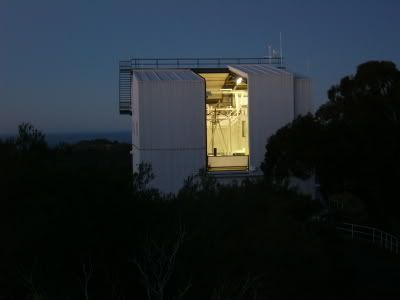
As I got into the dome, I could see the moon peeking through the dome doors, so I managed to get this shot of the moon with the secondary mirror of the scope...
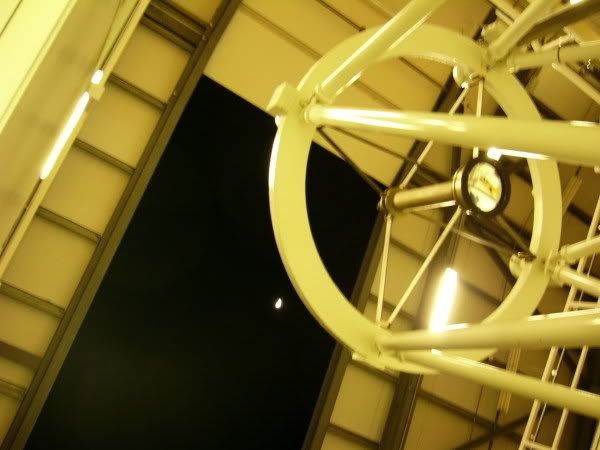
This is the actual beast...the primary 2.3m diameter mirror. The primary mirror doors are opened, and to the right you can see the beginnings of the spectrograph which is the instrument which actually deals with the light collected from the mirror. There is also an imager to the left, but tonight we're taking spectra from a binary system, so light-path is being 'piped' into the spectrograph.
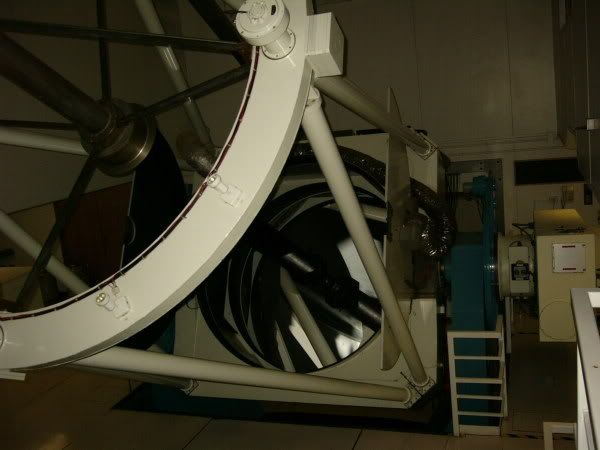
The spectrograph CCDs have to be cooled to about 170K (about -100 Celsius) to reduce thermal noise. Cooling is achieved by filling the coolant tanks with liquid nitrogen regularly. The spectrograph has two CCDs for the red and blue regions of the optical spectrum...here the blue CCD is to the left and the other is the red CCD. The liquid nitrogen tank at lower right is where we top it up from.
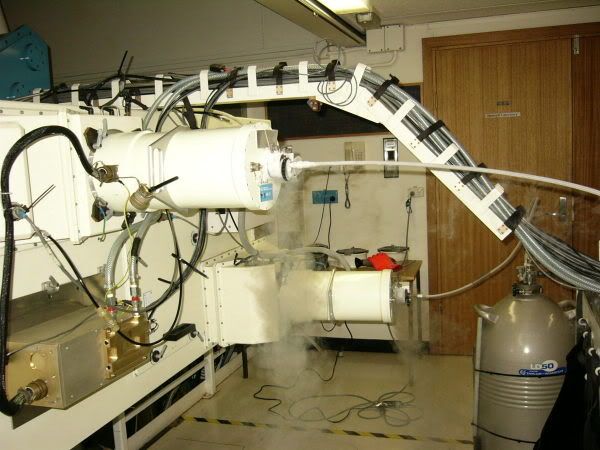
A closer view of 77K goodness...
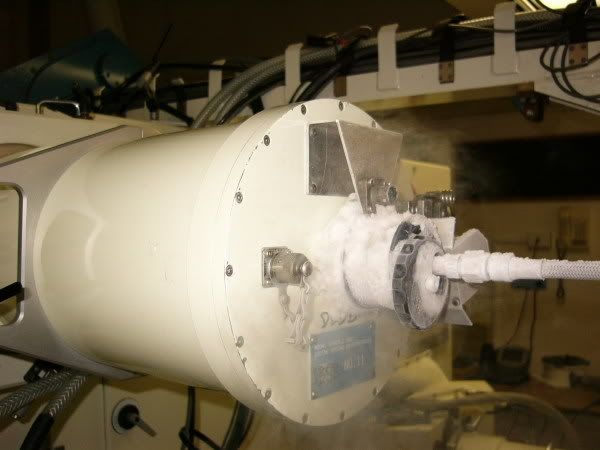
By the time the liquid N2 tanks are filled up, the hoses are frozen solid, and brittle enough to snap right off if we try to bend it. So they need to be thawed up before the hose can be removed. Yes, that's a commercial hair-dryer.
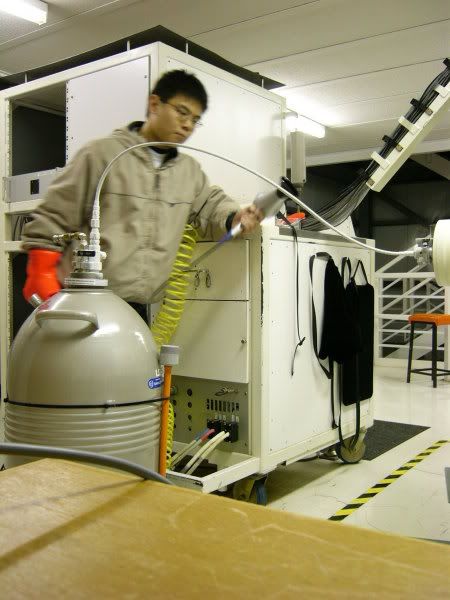
The control room is on the first floor of the dome. The Unix terminals to the left control the instrument, while the control panel to the right is for the entire telescope...slewing, turning lights on-off etc are all done from here.
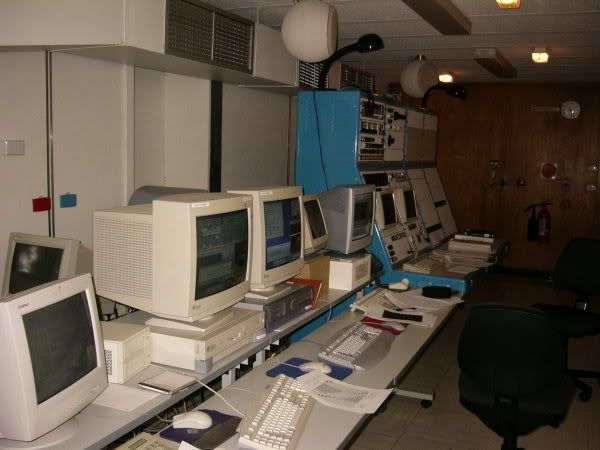
A closer look at the telescope controls. The system is apparently original from the telescope's 'first light' in 1984, and it's obvious from this photo. But it works well enough...just punch in coordinates in the keyboard and the telescope slews around to acquire the target.
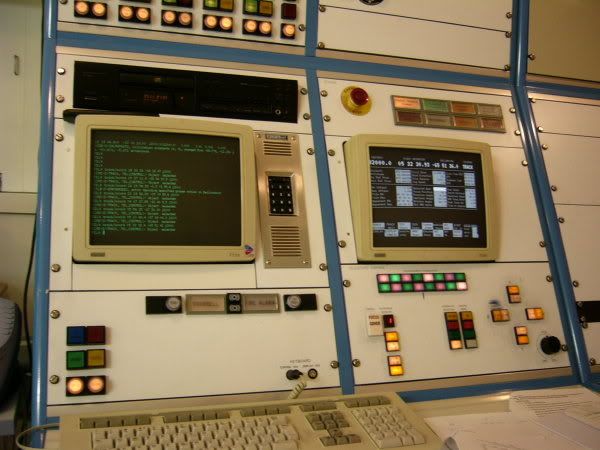
However, there are always slight errors in the calibration of the telescope pointing, so we need a tracking scope to make sure we're on target. On the screen, the bright object in the middle is the source we'll be observing. The horizontal bar across the middle tells us where the light for the spectrograph is being collected from (spectrographs usually have a slit from which a one-dimensional 'strip' of the sky is observed for spectra), and the wedge at the bottom gives us the azimuthal position. So in this case we do not have to correct for the azimuth, but the slit needs to be positioned closer to the centre of the source we're looking at. Also, there will be a slight drift of the target away from the telescope with time, so the positioning of the telescope needs to be constantly adjusted. Normally, guide stars are used to automatically correct the position. However, my supervisor didn't want to use the auto-guider (I suspect he didn't know how, since he's a theorist), so my job was to take regular exposures of the tracking scope (every 5 minutes or so), and adjust the telescope aim as required. For the entire night.
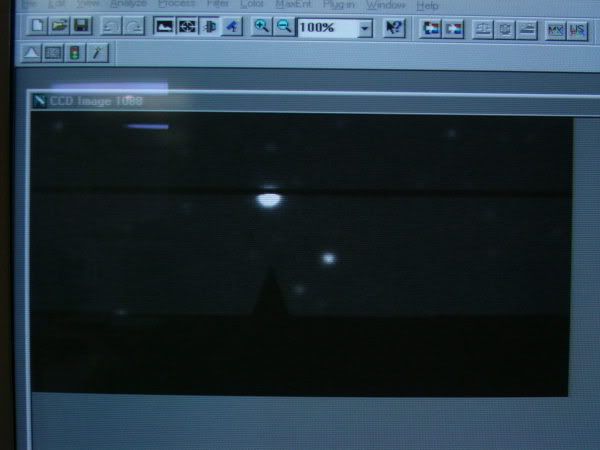
And just in case I get bored while doing the manual tracking, my supervisor's given me some homework to keep me occupied...
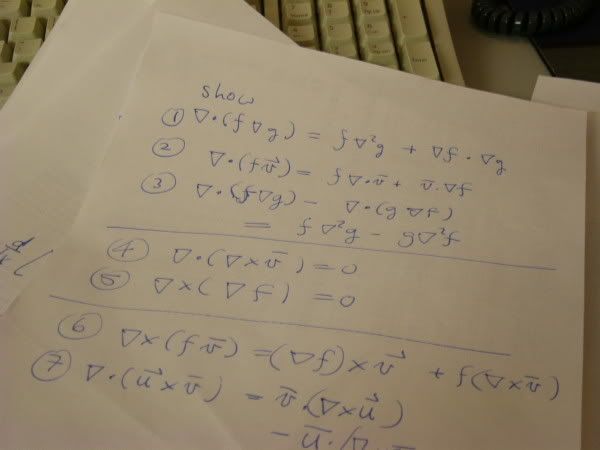
Apart from our own source, which is a X-ray source believed to be either a black-hole binary or neutron-star binary (our observations are intended to solve this question), we were also requested to take spectra of a target of opportunity: a type-1A supernova which went off in the galaxy NGC1559, about 50 million light years away. The supernova is bracketed in the small cross-hairs, and it belongs to the galaxy next to it. It's a 12th magnitude object, which makes it one of the closest SN-Ia known. SNIa are important because they are 'standard candles' used to measure cosmological redshifts to distant galaxies.
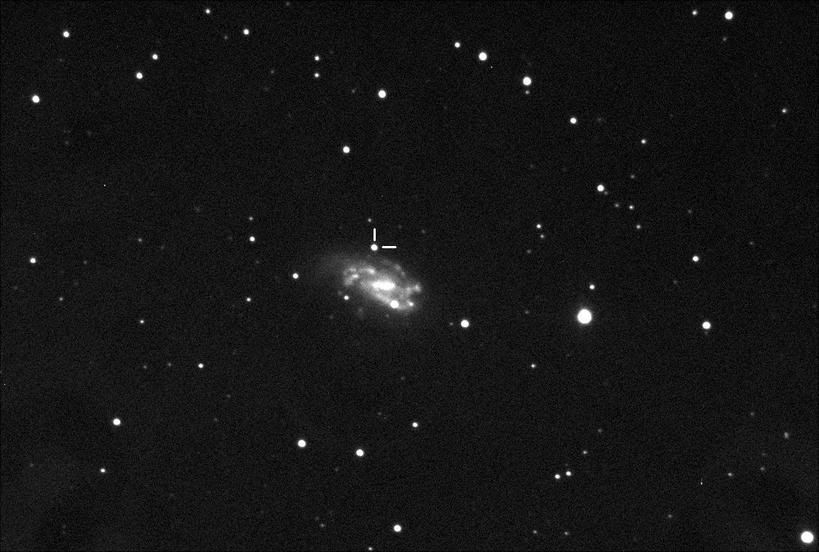
After a long night's observing, we finally back up as the dawn light starts to mess things up. This is a shot from the top of the 2.3m dome looking across the rest of Siding Spring. The 3.9m Anglo-Australian Telescope dome is at the right, and the left is the 1.2m UK Schmidt telescope.
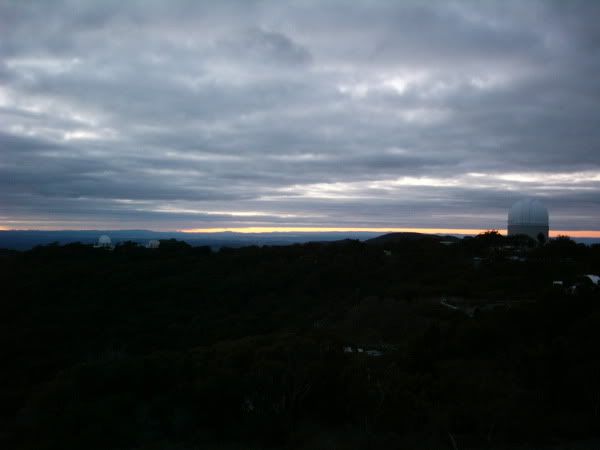
As I was walking back to the lodge I managed to catch this spectacular view of some rays of sunlight breaking through the clouds.
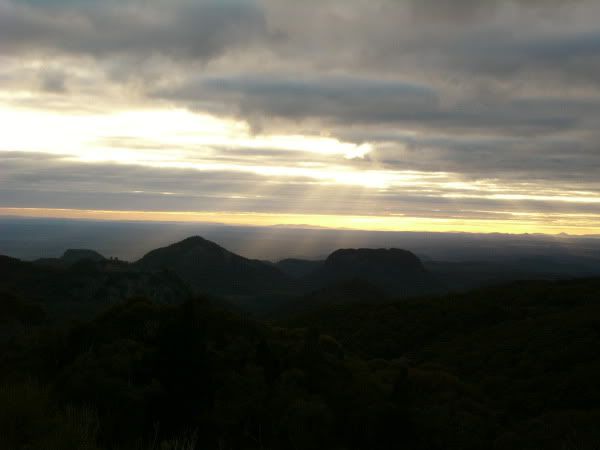
It's 7am by now, and after a hard night's work it's time to turn in for a good day's rest.

